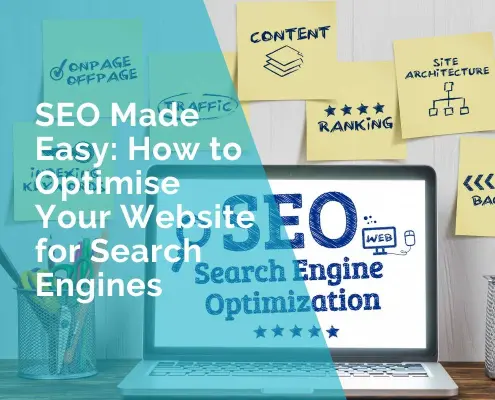SEO Link Building for Small Business Growth: 8 Strategies to Get Backlinks in 2024
Link building is an often misunderstood and misused part of SEO. It’s easy to fall into the trap of buying links from spam websites in pursuit of more links. However, this strategy has not been effective for many years now.
But how can you actually get relevant backlinks in 2024? In this article, we will explore the importance of link building for small businesses and nine strategies for getting backlinks.
Why You Need to Get Backlinks
Before we dive into the how, let’s look a bit into the what and why.
A backlink is a hyperlink sending people to your website from someone else’s. They are divided into dofollow and nofollow links. For direct SEO impact, you want dofollow links, as they positively influence your ranking in SERPs. However, nofollow links have indirect positive effects as well, such as increasing your authority and popularity in the eyes of consumers.
Many beginning SEOs wonder whether they should concentrate on getting fewer high-quality links or more links of lower quality. When search engines were in their infancy, quantity was definitely a defining factor, which is why there were so many link farms, bulk link orders, and other unsavory tactics that diminished user experience.
These days, link quality plays a much higher role, making old tactics obsolete for all but the most fringe cases. You still want to get plenty of backlinks — nobody will care about your website if The New York Times references it once, but they will if multiple reputable sources do so on a regular basis.
To see who links to you, use tools like Google Search Console, Semrush, Ahrefs, Backlinko, or another one of your choice. Knowing this allows you to track how successful your link building efforts are and adjust them on the fly instead of having to rely on guesswork.
8 Strategies to Get Relevant Backlinks in 2024
With the basics out of the way, let’s look at the eight strategies for building a good link portfolio.
1. Guest Posting
The first thing any SEO expert will recommend for creating backlinks to your website is guest posting. Find a few blogs related to your field, ask them if they would be interested in your experience, and share it with the audiences of their blogs. Sometimes, you will have to pay; other times, they will pay you instead or write an article for you in exchange.
You can also buy backlinks or get cheap unlinked mentions from special link building providers. This is a great way to improve your SEO if you don’t have the time or resources to create backlinks manually.
Guest posting helps you get reputable links while simultaneously building your authority as an expert in the field, which is important for the next way of building links.
2. Thought Leadership
While acquiring links by posting to outside sources is important, don’t forget to develop your own blog. It isn’t a fast process, but it’s still a great way to regularly get free backlinks.
Focus on writing about things you know about, your experience, and cases of your company that can highlight your expertise and provide a unique look into the hot topics of your industry.
The best link magnets are extensive articles that look at a specific issue from different angles and offer unique insights, as well as detailed instructions for dealing with specific problems.
3. Creating Linkable Assets
Similar to thought leadership articles, creating assets is amazing for showing off your expertise, helping your readers, and getting backlinks. Assets that get the most links are:
- Good data is rarely free and is akin to digital gold. An extensive study of hot industry issues with proper interpretation of acquired data can help you build a reputation as a trustworthy expert in the field.
- Visual representation of acquired data is great for quickly understanding the general trends in the industry and even better for sharing.
- While you definitely should keep some tools for yourself, sharing some of them with the public can net you a ton of links and a great reputation. This can be a simple template for writing outreach emails or a complicated piece of software that automates common industry processes.
Doing extensive research isn’t an easy task, but many hands make light work. That’s where the next strategy comes in.
4. Networking and Influencer Outreach
Collaboration is at heart of many great things, so don’t be afraid to team up with other business owners and influencers. There are many ways to cooperate for mutual benefit:
- Article exchange. Writing articles for each other mixes audiences, bringing more organic traffic to both blogs.
- Collaborative articles. If you want to go a step further, try collaborating to create one big article that combines the expertise of both businesses or different influencers. Typically, only one business will post this article on their page, so make sure to collaborate frequently to make sure everyone benefits.
- Opinions of proven experts always bring traction to publishers, so make sure to collaborate with big influencers in your field. Try to find questions that will resonate with your audience. Alternatively, ask your readers what they want to know to help you prepare better questions.
- Social media promotion. Paying for influencer promotions can be expensive, but it’s also a good way to gain more traffic. On the other hand, businesses of similar sizes will usually shout you out on their socials for free if you do the same for them.
Make sure that your collaboration makes sense. You may be good friends with a food blogger, but if your company does construction, there is very little overlap besides the forbidden cotton candy.
5. Local SEO Link Building
If your business relies on the local community for its operations, you can get backlinks by implementing proper local SEO.
The first thing you should do is find local business directories and try to enter your business into as many of them as you can. This allows you to get business listing backlinks and advertise your services to local customers.
However, if you want to go a step further, you should involve yourself with the life of the local community by organizing or participating in local events, like charities, competitions, conferences, etc.
6. Newsjacking and Trend-Based Content
Newsjacking and trend-based content can work both for local and global businesses. Responding to the latest news, especially if it’s relevant to your business, can bring attention to your website and social media. Your opinion can even get quoted by news outlets to develop their own stories.
Similar to this, you can leverage the power of trends for your own good. See a cool trend on TikTok or Instagram? Try to replicate it! Don’t try to force viral content simply because “everyone else is doing it.” People have become painfully aware of the corporate world trying to invade their spaces and will rake you through the coals if your content is not genuine. Although bad publicity is still publicity, don’t tell us we didn’t warn you.
7. Help A Reporter Out
Journalists often need help from industry experts to better understand the details of the topic they report. Sometimes, they will reach out directly, but that wasn’t always convenient for both parties.
Up until 2024, we had a service called Help A Reporter Out (HARO), which connected reporters with experts. In exchange for information and opinions, journalists would include your links in their articles. Although, frequently, these were nofollow links, reducing their SEO value.
Despite the discontinuation of the original HARO, we have two big alternatives:
- A direct evolution of HARO from its latest owners, this paid platform serves real-time queries from journalists for subject matter experts to respond to.
- Source of Sources (SOS). Created by the original creator of HARO, this simplified free platform sends you journalist queries up to three times per day.
You can also occasionally find reporters in the wild, looking for subject matter experts. However, there is no reliable way of spotting them this way, so consider it a lucky catch if you manage to find them this way.
8. Brand Mention Monitoring
While brand mention monitoring is more of a PR tactic, you can still use it to build backlinks. Here are some of the ways you can achieve that:
- Unlinked mentions. Sometimes, people will reference your brand and not link to your website, either intentionally or not. While it’s not entirely useless for you, getting a link will bring you more benefits. You can contact the host and request to add the link. In exchange, they might ask you for some additional info to improve their content.
- Monitoring competitors. Seeing the general sentiment of the public about other competitors can help you improve on their working strategies and capitalize on their shortcomings. If someone mentions a competing brand, you can reach out to the publisher and offer more useful insights in exchange for swapping the mention of the competitor to yours.
- Finding collaboration opportunities. When someone mentions you positively in their article or social media post, consider reaching out to them and offering collaboration.
Conclusion
Link building remains a cornerstone of effective SEO strategies for small businesses. Relevant, authoritative backlinks significantly boost your website’s visibility and credibility while also establishing a positive image in the eyes of your customers.
Remember, successful link building is not about quick fixes or shortcuts. It’s a continuous process that requires patience, creativity, and a genuine commitment to providing value to your audience and industry. By consistently implementing these strategies and adapting to new opportunities, you can steadily improve your website’s SEO performance and drive sustainable growth for your small business.
Start implementing these strategies today, and watch as your small business gains traction, one backlink at a time.
***
Mary Nellsy












